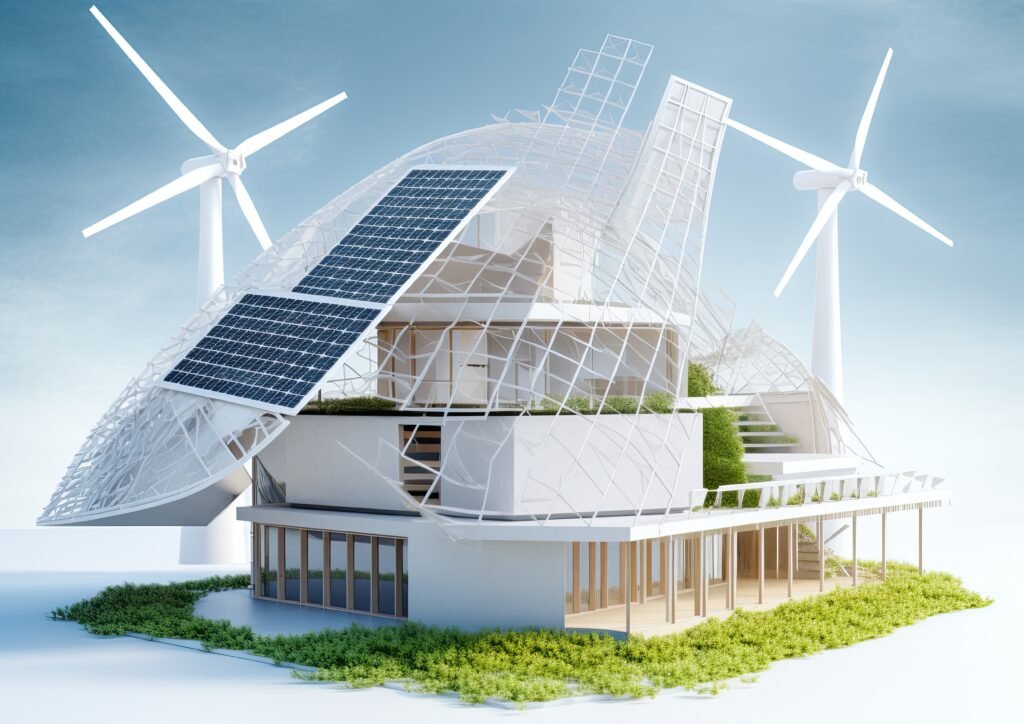5 Top Trends Shaping Green Construction Practices in 2025
Green Construction Practices | Sustainable Construction |Future Construction Industry | Top Trend in Construction
In 2025, the construction industry is experiencing a significant shift, with green construction practices moving from optional to essential . This transformation is driven by pressing climate issues, increasing resource scarcity, and a growing environmental consciousness . Let's explore the top five trends shaping this green revolution in construction.
1. Smart, Sustainable Materials Lead the Charge
The foundation of green construction lies in the materials we use . In 2025, the industry is increasingly adopting smart and sustainable materials that minimize environmental impact while maintaining durability and performance .
Low-Carbon Concrete: Innovations in concrete production are crucial, with low-carbon options like ashcrete and carbon-negative concrete gaining traction . These alternatives reduce the significant carbon footprint associated with traditional cement .
Recycled Steel: As one of the most recycled materials in the U.S. , recycled steel is a smart choice for sustainable homes, offering durability and reducing the need for new resources . Recycling steel also saves a significant amount of energy and reduces carbon emissions . The recycled metal market is projected to reach $99.13 billion by 2029, driven by green manufacturing practices .
Sustainably Sourced Wood: Using wood from sustainably managed forests ensures that this widely used material remains a renewable resource .
Mycelium-Based Insulation: This innovative material offers comparable performance to traditional insulation like polystyrene, providing an eco-friendly alternative .
Self-Healing Concrete: With the ability to repair its own cracks, self-healing concrete enhances the longevity of structures, reduces maintenance costs, and improves impermeability .
Bamboo: This fast-growing, renewable resource is versatile for various applications, from flooring to structural support, making it a cost-effective and sustainable option .
The Sustainable Construction Materials Market Size is valued at USD 225.9 billion in 2023 and is predicted to reach USD 539.2 billion by the year 2031 at a 11.8% CAGR during the forecast period for 2024-2031.
Construction firms are increasingly leveraging these materials to meet LEED certification standards, align with environmental goals, and gain a competitive edge .
2. Net-Zero Buildings Are the New Standard
Net-zero construction, where buildings produce as much energy as they consume, is rapidly becoming a sector norm in 2025 . Advancements in renewable energy technologies and passive design principles have made this ambitious goal a reality .
Energy Efficiency: Net-zero buildings prioritize energy efficiency through superior insulation, high-performance windows, and smart building technologies that optimize energy usage .
Renewable Energy Sources: Solar panels are a key component, with innovations like solar shingles and transparent solar windows becoming more prevalent . Geothermal systems and small wind turbines also contribute to on-site renewable energy generation .
Reduced Operational Expenses: Efficient design and renewable energy sources significantly lower operational costs, making net-zero homes highly attractive to eco-conscious buyers .
Developers are increasingly aiming to meet demanding environmental benchmarks, with entire communities of smart, net-zero homes emerging . Companies like NetZero Development are constructing residential buildings using off-site manufacturing and renewable power . The net-zero energy buildings market is projected to reach USD 60.21 billion in 2025 .
3. Circular Construction: Rethinking Waste
The construction industry has historically generated a significant amount of waste. In 2025, green construction practices are shifting from demolition to deconstruction, enabling the repurposing of materials at the end of a structure's life cycle .
Deconstruction over Demolition: Carefully dismantling buildings allows for the salvage and reuse of valuable materials, reducing landfill waste .
Material Repurposing: From reclaimed wood to recycled concrete, materials are finding new life in different construction projects .
Waste Management Strategies: Sophisticated waste sorting protocols and increased use of recycled and locally sourced materials are becoming standard practices .
This move towards a circular economy in construction minimizes waste and conserves valuable resources.
4. Decarbonization Through Prefabrication
Prefabricated buildings have long been recognized for their efficiency. In 2025, they are becoming a key contributor to the decarbonization of the construction sector .
Precise Material Use: Crafting building components in a controlled environment ensures accurate material usage and minimizes waste .
Quicker Assembly: Off-site construction leads to faster on-site assembly, reducing construction time and associated energy consumption .
Reduced Transportation Emissions: Prefabrication can lower transportation emissions compared to traditional on-site construction
Renewable Energy in Manufacturing: If prefabrication facilities are powered by renewable energy, the environmental benefits are further amplified .
When paired with circular construction principles, prefabricated buildings offer a powerful approach to sustainable and efficient building . The global modular construction market is growing, helping minimize waste and expedite the construction process .
5. Government-Driven Support and Incentives
Governments worldwide are playing a crucial role in boosting the adoption of green building practices through incentives and the establishment of standards .
Incentive Programs: Countries with net-zero targets are implementing financial incentives to encourage green building . For example, Singapore has a Green Mark incentive for retrofitting existing buildings.
Building Standards: Many regions are setting mandatory green building standards for new constructions. China, for instance, is set to apply green building standards to all new urban buildings by 2025 . New York City is also implementing carbon caps on buildings.
Retrofitting Efforts: Governments are actively pursuing retrofitting existing buildings to improve energy efficiency and reduce emissions.
Building the Future One Green Construction Practice at a Time
Adopting these trends can significantly reduce global carbon emissions and resource consumption. They ensure long-term economic viability in the construction sector as enterprises pivot toward greener, more sustainable practices. With the environment in focus and sustainable goals in mind, the planet becomes a safer future-proof home for its inhabitants.





